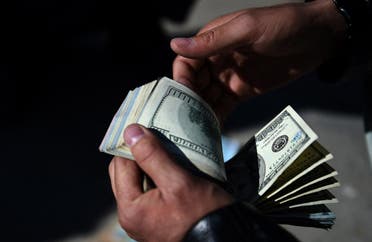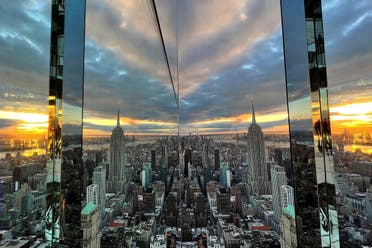Despite economic uncertainty in many countries, the number of ultra-rich individuals has increased, according to the latest Wealth Report by high-end property firm Knight Frank.
How much an individual needs to break into the wealthiest 1 percent around the world depends on where a person lives. For example, if a person lives in Monaco, a known hub for the super-rich, one needs assets worth $13 million; in the US, $5.8 million is required, while in the UAE, a person can make it into the 1 percent club with $2.65 million.

In the US, an individual needs $5.8 million to be part of the 1 percent. (File photo: AFP)
But those wanting to qualify as “ultra-high net worth” individuals need a whopping $30 million to their name.
The latest wealth report by Knight Frank also showed the number of the ultra-rich rose globally by 4.2 percent last year, with the Middle East coming in second after the US in terms of growth, with a 6.2 percent rise.
“The key thing in the Middle East is just growth in underlying economic performance, particularly in Saudi and also in the UAE. But actually, that kind of goes more widespread,” Liam Bailey, Head of Research at Knight Frank told Al Arabiya English. “For example, Turkey, which is in the Middle East from our numbers perspective, saw really strong growth in the numbers of ultra net worth individuals and that was led by industrial expansion. There’s been a huge amount of reshoring development of manufacturing capability out of China into the region. And again, that’s helped to boost the numbers.”
Boost in wealth creation
Meanwhile, wealth creation got a boost last year from more robust economic growth and stock market gains led by optimism surrounding Artificial Intelligence (AI).
Bonds also benefited from expectations that interest rates would fall. High-end residential property values increased by more than 3 percent, with cities like Dubai seeing a 16 percent increase, second in global rankings for house price growth.
“Dubai has gone through kind of repricing exercise post COVID. We saw really big growth over the past two or three years in terms of prices there taking the prime market,” Bailey said. “And yes, there’s been a slowdown, and 40 percent plus annual growth wasn’t sustainable, but we’re still seeing double-digit growth in Dubai. There’s still a wait [for] demand and supply is struggling to kind of keep up with that. So that’s helping to propel prices high.”
According to the head of research, investors will have more opportunities to get into commercial properties this year.
“If you think about real estate, I think there is a massive opportunity to play. So commercial real estate values have fallen over the past 12 months as opposed to residential. There’s probably a little bit further to go in some markets, there’s a lot of refinancing coming up this year,” Bailey said. “So, for well-capitalized investors, there’s a real opportunity to play in terms of getting into commercial property this year, and there will probably be more stock available to buy into, and we know the ongoing appetite for commercial property with 19 percent of our individuals globally looking at commercial opportunities markets.”
What does $1 million buy?
And in the world of the wealthy, people often ask, what does $1 million buy.
In Dubai, a cool million will get you a 91 square meter luxury apartment, and in New York or London, a 34 square meter flat, but in Monaco, a million dollars will only buy a 16 square meter home.

The Empire State Building and New York’s skyline are seen, Oct. 18, 2021. (Reuters)
Shift in wealth
And a key shift coming soon is the massive transfer of wealth expected from baby boomers to their children, with a staggering $90 trillion in the US alone set to be inherited by millennials, making them the richest generation in history.
After a decline in 2022, the number of wealthy individuals worldwide is on the rise again. The next five years are set to see an increase of about one-third in the ultra-high rich globally, with growth led by Asia, where the number of wealthy individuals is expected to rise by 38 percent, and in the Middle East, the number of wealthy individuals is expected to be up 28 percent over the next five years.
Source: Al Arabiya



